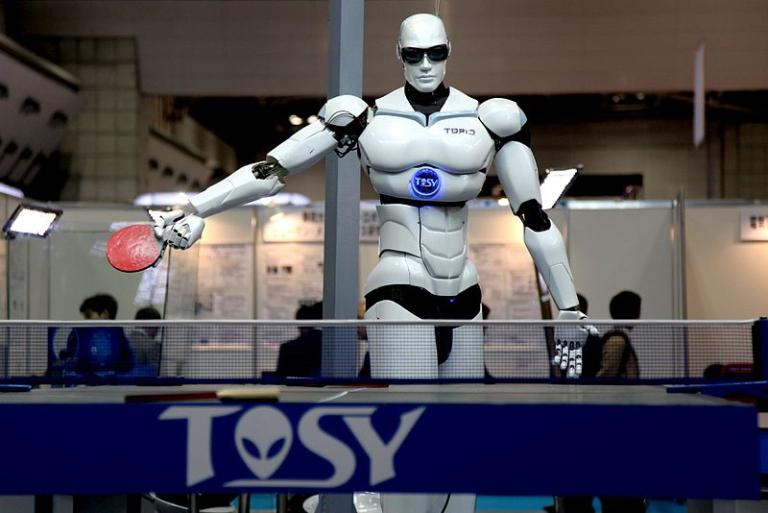Here’s an article featured on Drudge yesterday: “The world’s first robot-run farm will harvest 30,000 heads of lettuce daily.”
The Japanese lettuce production company Spread believes the farmers of the future will be robots.
So much so that Spread is creating the world’s first farm manned entirely by robots. Instead of relying on human farmers, the indoor Vegetable Factory will employ robots that can harvest 30,000 heads of lettuce every day.
Don’t expect a bunch of humanoid robots to roam the halls, however; the robots look more like conveyor belts with arms. They’ll plant seeds, water plants, and trim lettuce heads after harvest in the Kyoto, Japan farm. . . .
The new farm, set to open in 2017, will be an upgrade to Spread’s existing indoor farm, the Kameoka Plant. That farm currently produces about 21,000 heads of lettuce per day with help from a small staff of humans. Spread’s new automation technology will not only produce more lettuce, it will also reduce labor costs by 50%, cut energy use by 30%, and recycle 98% of water needed to grow the crops.
Which is pretty impressive.
But this is, like other virtual farms, dependent on artificial light. According to an article in NPR, their proponents claim that, even with the high cost of the artificial lighting, the urban indoor farms are still better for the environment by producing locally and avoiding shipping costs. But, even so, the product is expensive, and
So far, vertical farms tend to specialize in only a few crops. “It’s always leafy greens,” says Stan Cox, a senior scientist at the Land Institute, a nonprofit organization in Kansas devoted to sustainable agriculture. “The reason is, if you try to grow grains or fruits or vegetables, like beans, tomatoes, potatoes, indoors out of the sunlight, the energy requirements for lighting become impossible.”
According to a (by now dated) article in (the English-language version of) Der Spiegel, the notion of vertical farming originated out of the idea that farmland itself would be in short supply as the earth’s population continues to grow, assuming no advances in crop yields.
What do you think? Can the problem of energy consumption for light be solved? Or is it simply unnatural to use artificial light for crops, when we have an abundance of sunlight?












